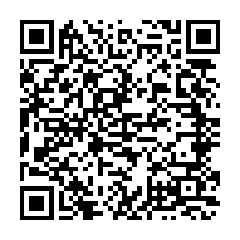Writing Spark Native Functions
18 Feb 2021Recently Matthew Powers released a short blog post on creating Spark native functions that I found interesting. Previously I had read a post by Simeon Simeonov about the same topic but had not internalised the concepts presented.
Powers’ post shows a simple example of creating a Catalyst Expression, the proper name for a Spark Native Function, using the example of creating a method to get the beginning of the month. This involves writing code in several Spark packages. Presumably this is done due to some reflective requirements.
I thought I’d attempt something similar to eliminate the UDF I mentioned in a previous post on getting all the dates between 2 dates (inclusively in this case), for a more in-depth guide please refer to Powers’ post.
The first thing I did was create an object to hold my additional functions.
I placed this in org.apache.spark.sql, however I am unsure if this is
necessary:
object LyndonFunctions {
private def withExpr(expr: Expression): Column = Column(expr)
def dates_between(start: Column, end: Column): Column =
withExpr {
DatesBetween(start.expr, end.expr)
}
}
The DatesBetween is a case class defined in
org.apache.spark.sql.catalyst.expressions, and is the core part of writing new
Spark Native Functions as it extends the Expression type:
case class DatesBetween(
startDate: Expression,
endDate: Expression
) extends BinaryExpression
with ImplicitCastInputTypes {
override def prettyName: String = "dates_between"
override def left: Expression = startDate
override def right: Expression = endDate
override def inputTypes: Seq[AbstractDataType] = Seq(DateType, DateType)
override def dataType: DataType = ArrayType(DateType, containsNull = false)
override protected def nullSafeEval(start: Any, end: Any): Any =
LyndonUtils.getDatesBetween(start.asInstanceOf[Int], end.asInstanceOf[Int])
override protected def doGenCode(
ctx: CodegenContext,
ev: ExprCode
): ExprCode = {
val dtu = LyndonUtils.getClass.getName.stripSuffix("$")
defineCodeGen(
ctx,
ev,
(a, b) => s"$dtu.getDatesBetween($a,$b)"
)
}
}
I still need to familiarise myself further with the Expression class and it’s
subtypes but the 2 most important parts in my example are the nullSafeEval and
doGenCode methods.
Both define what code is called by this expression. nullSafeEval calls actual
code while doGenCode generates Java code that will be compiled that uses the
given code. In this case I have put the Expression code in the function
getDatesBetween defined in LyndonUtils which I placed in
org.apache.spark.sql.catalyst.util.
object LyndonUtils {
type SQLDate = Int
private[this] def localDate(date: SQLDate): LocalDate =
LocalDate.ofEpochDay(date)
private[this] def localDateToDays(localDate: LocalDate): SQLDate =
Math.toIntExact(localDate.toEpochDay)
def getDatesBetween(start: SQLDate, end: SQLDate): ArrayData = {
val startDate = localDate(start)
val daysBetween = Duration
.between(
startDate.atStartOfDay(),
localDate(end).atStartOfDay()
)
.toDays
val newRows = Seq.newBuilder[SQLDate]
// get all intermediate dates
for (day <- 0L to daysBetween) {
val date = startDate.plusDays(day)
newRows += localDateToDays(date)
}
toArrayData(newRows.result())
}
}
Note that I use the Int type for dates in this code, this is because Spark
stores dates internally as integers. I also return an ArrayData type as this
is the type used internally for arrays in Spark.
With this done I can now make use of my function and even see it in the Logical Plans:
import spark.implicits._
val df = Seq(
(Date.valueOf("2020-01-15"), Date.valueOf("2020-01-20")),
(null, null),
).toDF("start", "end")
.withColumn("between", dates_between($"start", $"end"))
df.show(false)
df.explain(true)
| start | end | between |
|---|---|---|
| 2020-01-15 | 2020-01-20 | [2020-01-15, 2020-01-16, 2020-01-17, 2020-01-18, 2020-01-19, 2020-01-20] |
| null | null | null |
== Parsed Logical Plan ==
'Project [start#7, end#8, dates_between('start, 'end) AS between#11]
+- Project [_1#2 AS start#7, _2#3 AS end#8]
+- LocalRelation [_1#2, _2#3]
== Analyzed Logical Plan ==
start: date, end: date, between: array<date>
Project [start#7, end#8, dates_between(start#7, end#8) AS between#11]
+- Project [_1#2 AS start#7, _2#3 AS end#8]
+- LocalRelation [_1#2, _2#3]
== Optimized Logical Plan ==
LocalRelation [start#7, end#8, between#11]
== Physical Plan ==
LocalTableScan [start#7, end#8, between#11]
With that done I have eliminated the UDF defined in my previous post.
As a bonus I can create a simple extension class in Scala to extract all the densifying described in that post into a single reusable place:
object ExtraDataFrameFunctions {
implicit class DataFrameUtils(df: DataFrame) {
def densify_on_date(
dateColumn: String,
ascending: Boolean = true,
nullsFirst: Boolean = true
): DataFrame = {
import df.sparkSession.implicits._
val dates = df
.select(dateColumn)
.agg(
min(dateColumn).as("min"),
max(dateColumn).as("max")
)
.withColumn("range", dates_between($"min", $"max"))
.drop("min", "max")
.withColumn(dateColumn, explode($"range"))
.drop("range")
val sortCol = (ascending, nullsFirst) match {
case (true, true) => col(dateColumn).asc_nulls_first
case (true, false) => col(dateColumn).asc_nulls_last
case (false, true) => col(dateColumn).desc_nulls_first
case (false, false) => col(dateColumn).desc_nulls_last
}
// Must be outer to include any rows with null values in their date column
df.join(dates, Seq(dateColumn), "outer")
.sort(sortCol)
}
}
}


Comments